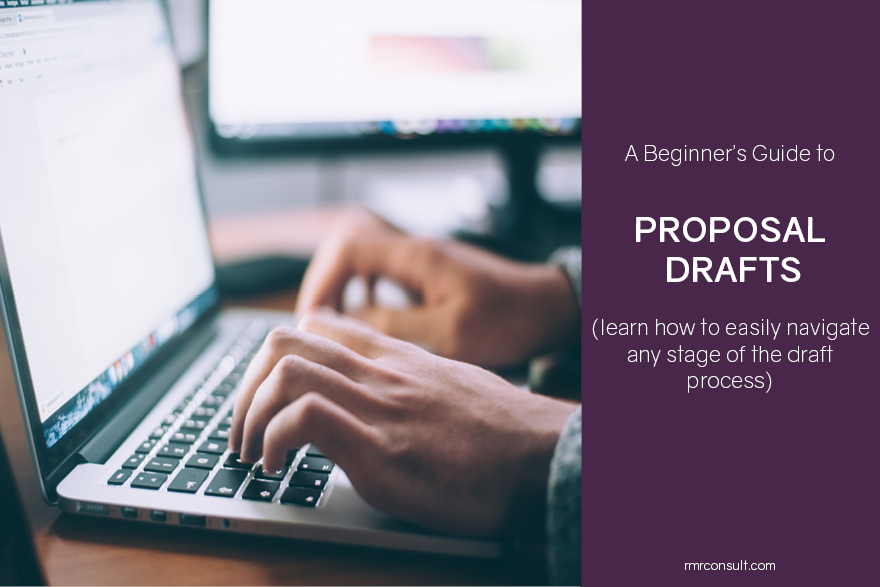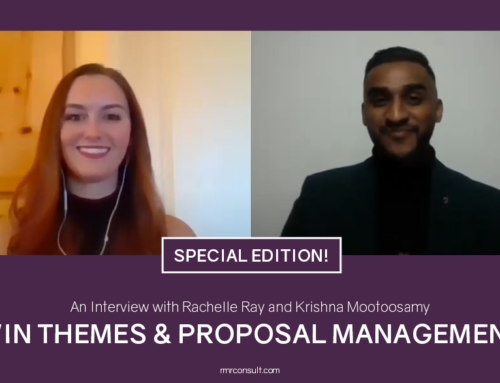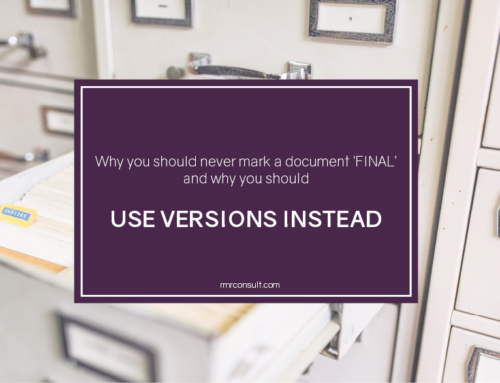A Beginner’s Guide to Proposal Drafts
Writing a proposal is a process that will likely have multiple draft milestones. The first milestone you’ll work towards is the outline draft, which will evolve into a content draft, which will become a technical draft, and then the final document. Each stage of proposal drafts is a team effort and it’s important to have all members involved in this process. However, as the proposal evolves from outline to final draft, the team members involved may change.
This draft process may not work for every team, or every proposal – there could be times when your process has an outline, a content draft, and a final document. Or, you might have six content drafts and a final. This post is a guide for what you and your proposal team should be looking for and doing at each stage.
Don’t forget to always make sure to run spell-check and save your team from reviewing distracting spelling errors.
Outline Proposal Drafts
The first draft you’ll want to put together is the outline. These are also known as ‘skeleton’ drafts; or ‘swiss cheese’ drafts (makes sense, right?) It’s exactly what you’re thinking: a synopsis of the proposal with as many pieces filled in as possible. For your outline draft, you’ll have all the RFP questions/requirements in place and loosely spaced out and so that you are able to see how many pages you could/should budget for each question/section. This is also where you will identify areas missing information and note that those holes will need to be filled.
Outline drafts are a good way to view the raw content you have available – rough template narratives, project sheets, resumes, and any required appendices/forms. You are able to see the amount of space available and also the space needed for each section of the proposal.
In your outline, you may want to mark or denote sections that are being completed by other members of the proposal team. For example, highlighting the text in a different color (I choose to go with the color pink) is an easy way to ‘mark’ which sections are missing and notify the other members of your team where they are needed.

Who is involved in the outline proposal draft?
You will likely need other proposal team member input on certain sections of the proposal drafts (that may or may not have been discussed during the kick-off meeting). These team members might include the project manager, capture manager, design team members, or even team members not on the proposal that may have the information you will need (like project data or photographs).
Content Drafts
Content drafts are where the bulk of the proposal should be in place for content review. Members of the team will look over each section and begin to refine narratives, making sure that the win themes (strategies that give our proposals structures) are carried throughout the whole proposal. It is key to make sure the ‘voice’ of the proposal stays consistent, even if the content comes from numerous sources. Be able to identify any areas where content may need to be added, expanded upon, or cut down/edited. It is possible there will be multiple content drafts/revisions of a proposal, meaning there will be numerous versions sent back and forth between the team until the final product is ready.
The members involved will be dependent on who is responsible for providing content, as well as who is responsible for reviewing content. For example, an intern might be responsible for developing a figure or graphic, but wouldn’t necessarily be involved in the overall proposal draft review.
Who is involved in the content proposal draft?
- Project manager
- Principal-in-charge
- Client handler
- Designers
- Interns
Bonus: Sending updates of the proposals can give a sense of motivation to the team by letting them see the proposal start to take shape and the ideas visibly on paper.
Technical Drafts
Technical drafts are the last content drafts where only a minor clean-up is necessary. This is the last chance for the team to go through and make sure they stuck to the win themes, utilized a single voice, and none of the content conflicts. At this point, you may want to double-check and make sure the concepts in the proposal match the requirements of the RFP.
Key tasks to complete:
- Final spell check
- Final grammar check
- Quality Assurance (QA) process: make sure the proposal is completely responsive to all the RFP requirements – all forms are completed, signatures are included, all aspects of all questions are answered, no content is missing
During the technical draft, it can be a good opportunity to have a Red Team review the proposal. This is an independent group of outside reviewers who are not a part of the proposal process that assesses the completeness of a proposal. They give fresh eyes and an outside perspective, letting you know if the proposal makes sense.
Final Drafts
Finally, you’re about to cross the finish line. There should be nothing left to edit and the document should be ready for print/submission at this point. The final draft should be submitted to the principal-in-charge and/or project manager to get final approval for submission.
Keep in mind, not every proposal or team will follow this process, and that’s okay. But, if you are to complete these draft steps, I hope this guide on proposal drafts will help you to know what to look for and do. Now that I’m done explaining my draft process, tell me, what is your review process?

Audrey Gutgsell | Marketing & Communications Intern
Audrey is a rising fourth-year student in the Moody College at the University of Texas at Austin pursuing a Bachelor’s in Public Relations. She is always open and ready to learn more when it comes to enhancing her skills in both communication and writing. She is a passionate advocate for diversity, equity, and inclusion. Audrey would describe herself as intuitive, positive, and goal-oriented. She is looking forward to starting a career in PR and cultivating meaningful relationships with clients, media, influencers, and community partners.






Leave A Comment